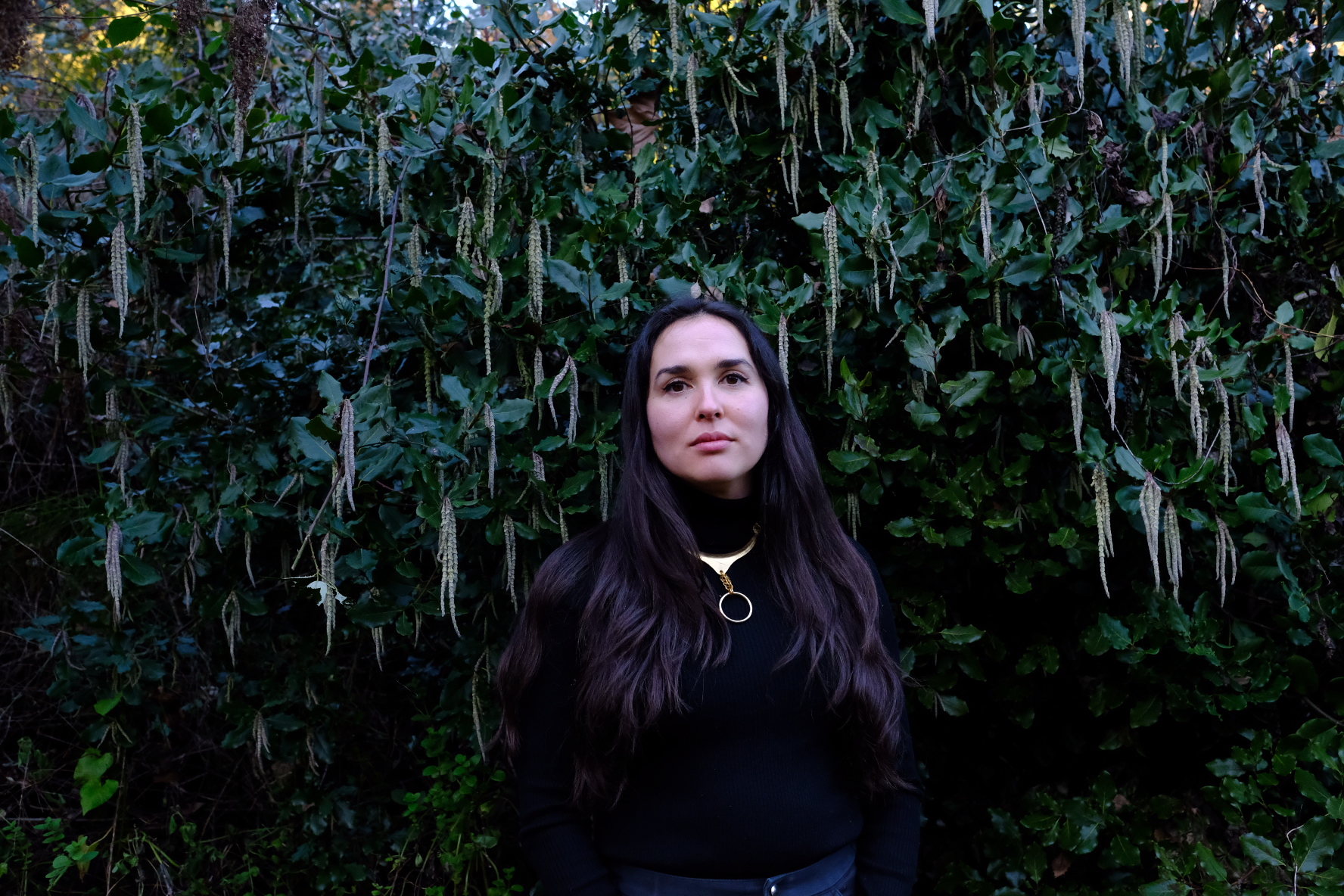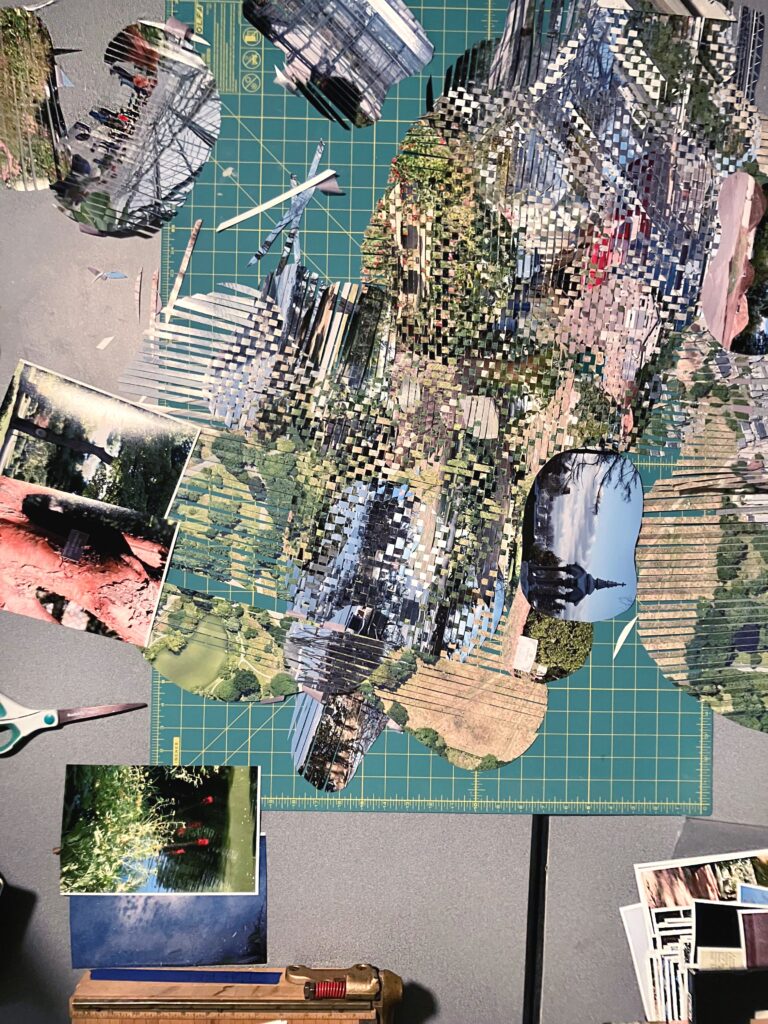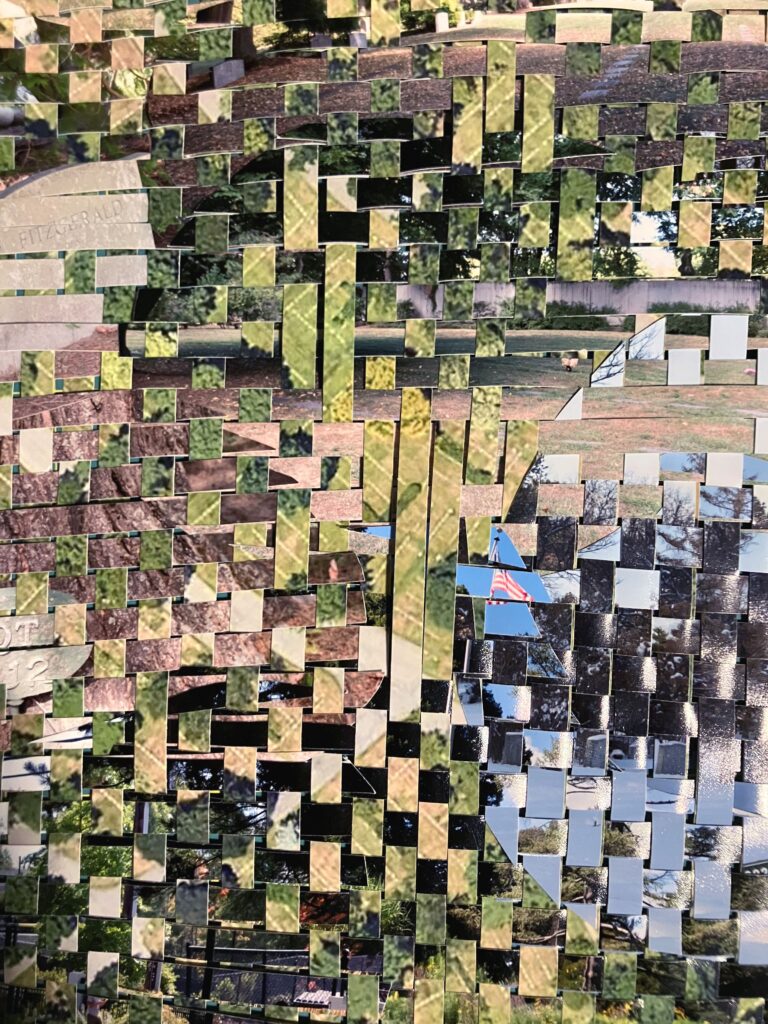Plucked From Earth to Bloom: A Conversation with Artist-in-Residence Markel Uriu
Julie-Anne Whitney March 12, 2025 Art

You are an interdisciplinary artist who uses organic materials like paper, leaves, and plants to create artworks that touch on impermanence, the fragility of life, and the cyclical nature of time. In what ways do these themes influence your work?
My work has moved through various iterations on this theme. I am interested in the ways that the world is dynamic and mutable, and how we ground ourselves within that reality. Much of my work is fairly labor intensive and often includes repetitive actions that build into a larger piece. Organic materials have provided a means to explore the tension of effort and consistency and explore the ways that, despite our best efforts, there are unknowable things that move beyond our control. This manifests in both the personal arcs of life, and through broader ecological themes. Life and ecology is grounded in cycles of birth, growth, and death, however, it is not static in its cycles. I am trying to engage in the emotional landscapes that comes with that tension, and explore what comes from an acceptance of these movements. How do we move with the larger forces in our lives to the best of our ability in thoughtful and caring ways? What choices can we make to shape the movements of time? Are there things we can gather from history that might inform this process? What cultural assumptions exist that inform the ways we move forward? And if we ourselves our not static, how do we build a reality that moves towards a more caring world? These are all larger questions that drive my work.
You are working on a large paper weaving that explores the ecology and history of Mount Auburn as a garden cemetery. What inspired you to focus on this subject, and how do you choose the content that will eventually become part of the artwork?
I am particularly interested in the ways that the ecology of urban spaces intersects with human history. Being a garden, the cemetery is landscaped from its origin, and through the plants, which are operating on a variety of timescales, much can be gleaned from various era’s of planting. These plantings and design of the space shape the interactions and presence of other living beings within the landscape. My choice in the content highlights various expressions of these ecologies, showing the context of the cemetery through various seasons and moments of previous documentation throughout its history.

How did you become interested in paper weaving? What is it about the artform that speaks to you?
My exploration into weaving initially arose in the process of thinking about ecologies and how to depict the interdependent nature of the various living and nonliving things that exist within that context. No living thing exists in a vacuum, and to weave them together is an expression of their interconnectedness. I am interested in the ways the US Western perception of individuality and independence in our existence as singular beings drive our decisions. This understanding is troubled when thinking about the ways in which, place, context, and other living beings, human and non-human alike shape and influence us. The format of the weave has since extended beyond the idea of interrelated ecologies and into the realm of landscape and relationships.
There is an aspect of obscuring in the process of weaving together images. I am interested in this as a metaphor for the ways in which many aspects of our environments are rendered invisible by our own perceptions, whether that be through lack of knowledge of its context, specific viewpoints we hold that might obscure other ways of seeing, or even mundane objects or creatures we may overlook due to our familiarity of a place.
You’ve spent the last several months researching the Cemetery, its legacy, influence, and impact. What have you learned along the way?
One of the interesting aspects of Mount Auburn Cemetery is the ways in which the history is visible in the landscape. Mount Auburn is a park cemetery borne out of an era in which cities in the U.S. were rapidly urbanizing. One of the concerns of the time was where to bury the dead as cities densified, alongside a desire to provide open space for urban residents as such spaces were rapidly diminished. The design of Mount Auburn is intentionally designed in a time when the United States was a fledgling country and looking to establish a cultural identity. Romantic and picturesque values are embedded in the aesthetic and design, giving context for the values held by the original founders of the cemetery.
Many of the details within the landscape of the cemetery give much of the context of people and place within the history of the area. Through the names, dates, and of the many people who have been buried and memorialized here, there is a visual record of communities who have lived in the area since the cemetery's establishment. The design of tombstones speak to aesthetic values of various eras, and you can see subtle shifts in how these aesthetics have changed throughout time. Tagged trees, visual maintenance, and programmatic signage give context for how the cemetery is engaged with. Wayfinding, event signage, and notification of funerary ceremonies provide space for the deceased and those who are grieving.
Plantings provide context for the values and understandings of US ecology present at the time of their planting. Indian Ridge, which was recently restored in 2019, is planted with current ecologically minded concerns in mind. This prompted the removal of various plants now considered invasive, such as Norway Maples, which were originally introduced and intentionally planted as a shade tree in the United States in the 1700’s. Much of the plantings that replaced these trees are native and ment to foster habitat for local wildlife. The cemetery is incredibly diverse in its plantings and certain trees are here due to their popularity as ornamental species in prior eras, including the Norway Maple.

Can you tell us about your experience exploring the Mount Auburn archives and how that informed and/or influenced your work?
For much of my research in the archives I am relying on the visual archives for context and clues of the site and previous iterations of its existence. Photos and illustrations provide context for previous plantings and events that have happened in the cemetery that speak to the ways that the cemetery has been used historically. Earlier illustrations and depictions of the site and tombs speak to the ways in which the creators of the site desired it to be perceived, alluding to its legacy as a cemetery built during the romantic era. Additional research has led me to significant monuments and people that are buried in the cemetery, which I have also documented through my own images and images pulled from the archive to include in the weaving.
You have had other paper weavings exhibited at galleries, gardens, and universities in WA, CA, and NY. How is this paper weaving different from others you have created?
Previous weavings focused largely on specific species or objects within the landscape to construct the overarching ecology. This weaving is arranged spatially: It is my first time incorporating maps, landscape images, and archival imagery. The images are arranged to correlate with their location in the cemetery and the interwoven map. Through the weaving, the bird’s eye view is intertwined with the multiple views of the cemetery from the ground level to depict multiple views of the space that traverse time and physical orientation.
_____________________________________
Join 24-25 Artist-in-Residence Markel Uriu for a special one-day only exhibit of her original artwork, Plucked From Earth to Bloom on March 30, 10am-5pm in Bigelow Chapel. Free.

Comments
Comments for this post are closed